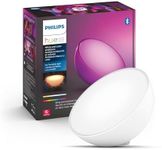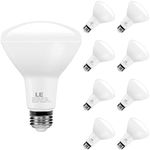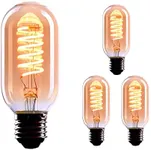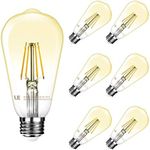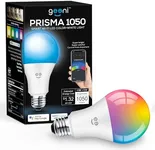Buying Guide for the Best Stream Lights
When choosing stream lights, it's important to consider the specific needs of your streaming setup. Stream lights can significantly enhance the quality of your video by providing proper illumination, reducing shadows, and ensuring that your face and surroundings are well-lit. The right stream light can make a big difference in the overall production value of your content. Here are some key specifications to consider when selecting stream lights and how to navigate them to find the best fit for you.BrightnessBrightness is measured in lumens and indicates how much light the stream light can produce. This is important because it determines how well-lit your streaming area will be. For small setups or close-up shots, a light with lower lumens (around 500-1000) might be sufficient. For larger areas or if you need more intense lighting, look for lights with higher lumens (1000-3000 or more). Consider your streaming environment and how much light you need to achieve the desired effect.
Color TemperatureColor temperature is measured in Kelvin (K) and describes the color of the light produced. This is important because it affects the mood and appearance of your stream. Lower color temperatures (2700K-3500K) produce a warm, yellowish light, while higher color temperatures (5000K-6500K) produce a cool, bluish light. For a natural look, aim for a color temperature around 4000K-5000K. Choose a light with adjustable color temperature if you want flexibility to match different lighting conditions or moods.
CRI (Color Rendering Index)CRI measures how accurately a light source reveals the colors of objects compared to natural light. This is important for ensuring that your skin tones and other colors appear true to life on camera. A higher CRI (90 or above) is preferable for streaming, as it will provide more accurate and vibrant colors. If color accuracy is crucial for your content, such as makeup tutorials or product reviews, prioritize lights with a high CRI.
AdjustabilityAdjustability refers to the ability to change the light's position, angle, brightness, and color temperature. This is important for achieving the perfect lighting setup for your stream. Look for lights with flexible mounting options, such as clamps or tripods, and those that allow you to easily adjust the light's direction and intensity. Adjustable lights are ideal if you need to frequently change your setup or if you want to experiment with different lighting effects.
Power SourceStream lights can be powered by various sources, including USB, batteries, or AC power. This is important for ensuring that your lights are compatible with your streaming setup and provide consistent power. USB-powered lights are convenient for portable setups and can be easily connected to your computer. Battery-powered lights offer flexibility and mobility but may require frequent recharging. AC-powered lights provide a reliable and continuous power source, ideal for long streaming sessions. Choose a power source that best fits your streaming environment and needs.
Size and PortabilityThe size and portability of stream lights are important factors to consider, especially if you have limited space or need to transport your lights frequently. Smaller, compact lights are easier to set up and move around, making them ideal for small streaming spaces or on-the-go setups. Larger lights may provide more powerful illumination but can be bulkier and harder to manage. Consider the size of your streaming area and how often you need to move your lights when making your choice.
